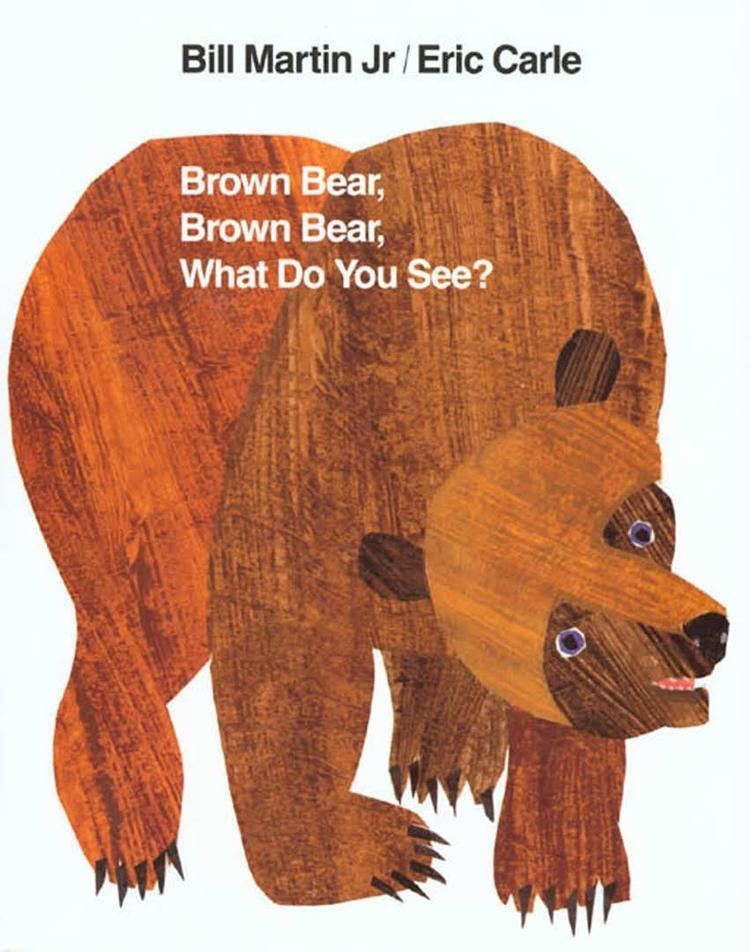9 /10 1 Votes
4.2/5 Goodreads Language English Published in English 1967 Originally published 1967 Genre Children's literature | 4.7/5 Barnes & Noble Country United States Publication date 1967 Media type Hardcover Publisher Doubleday | |||||||||||||||||||||||||||||||||
 | ||||||||||||||||||||||||||||||||||
Characters Purple Cat, Red Bird, Black Sheep, Brown Bear Illustrators Bill Martin, Jr., Eric Carle Similar Eric Carle books, Color books, Children's literature | ||||||||||||||||||||||||||||||||||
Brown Bear, Brown Bear, What Do You See? is a children's picture book published in 1967. Written and illustrated by Bill Martin, Jr. and Eric Carle, the book is designed to help toddlers associate colors and meanings to objects.
Contents
Bill martin reads brown bear brown bear what do you see
Summary
The book itself has little to no plot. Instead, the narrator asks various animals what they see with the response usually being another animal, the respondent is then asked what they themselves see, and the process is repeated. It features a Brown Bear, Red Bird, Yellow Duck, Blue Horse, Green Frog, Purple Cat, White Dog, Black Sheep, a Goldfish, a Teacher or a Mother, and Students or Children. The 1984 British edition of the book substitutes a monkey for the teacher. Carle explained that variations in text between editions (mostly on the last page) were due to Martin, and that he made new illustrations to go with the changes.
Sequels
Carle and Martin published three spin-off books: Polar Bear, Polar Bear, What Do You Hear? (1991) uses zoo animals and sounds; Panda Bear, Panda Bear, What Do You See? (2003), endangered species; and Baby Bear, Baby Bear, What Do You See? (2007), North American animals.
Reception
The book was one of the "Top 100 Picture Books" of all time in a 2012 poll by School Library Journal. As of 2013, it ranked 21st on a Goodreads list of "Best Children's Books," and the publisher claimed that there were "7 million copies in print in various formats and languages."
In 2010, the Texas State Board of Education briefly removed the book from the public school curriculum after confusing the author with philosopher Bill Martin, author of Ethical Marxism: The Categorical Imperative of Liberation.
